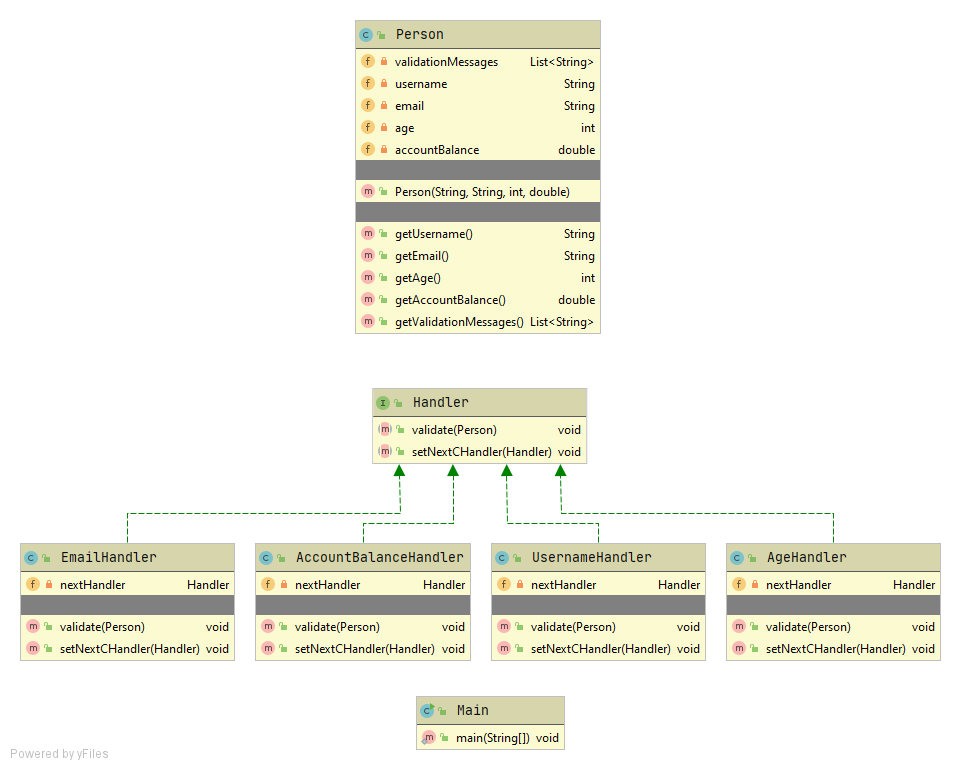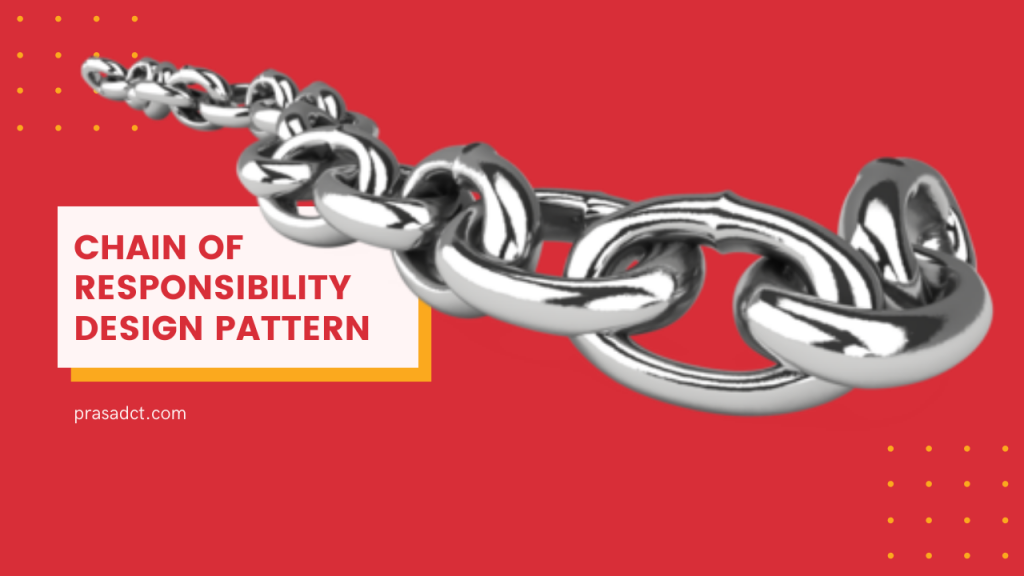Chain of Responsibility Design Pattern in Java is one of the articles among the collection of articles dedicated to explaining OOP Design Patterns in Java.
In 1994, four authors, Addison-Wesley, by Erich Gamma, Richard Helm, Ralph Johnson, John Vissides wrote a book: Design Patterns: Elements of Reusable Object-Oriented Software. There they have included 23 object-oriented design patterns and Chain of responsibility design pattern is one of them. The Chain of Responsibility design pattern is categorized as a Behavioural Pattern since it is used to control the behaviour of the application.

What is Chain of Responsibility Design Pattern?
Chain of Responsibility design pattern passes the requests along a chain of potential handlers until it reaches the end of the chain. A single request can be handled by one or more handlers while it travels through the chain or it can reach the end without handling either of them.
When to use Chain of Responsibility Design Pattern?
When client don’t know which handler or handlers are responsible to handle the request. So the client only need to create the chain and pass the request to it. Then the chain itself take the responsibility of forwarding the request along the chain. If there are handlers who can handle it, they will handle it as forward to the next handler in the chain until it reach the end of the chain.
Examples of The Responsibility Design Pattern in Java
Java Example Program
Let’s create a simple Java program to understand CoR design pattern.
There are lots of real-world scenarios in which we can use the CoR design pattern. For this example, I will choose a simple scenario where we need to validate the input request but the validators can be selected only at the runtime.
Class diagram

Now we need to create Handler interface. It has two methods. One is to validate the Person and the other one is to set the next handler.
Now we can create handler for each of the parameters that we need to validate.
Now in the Main method, let’s define the chain. After declaring the chain, we can send the object to be processed to the first node of the chain. We have already defined the chain so the chain itself does the processing and exit at the end. Here we are printing the results after it. In this case ValidateMessages list.
Conclusion
Chain of Responsibility design pattern passes the requests along a chain of potential handlers until it reaches the end of the chain. This pattern mainly used when the client do not know which handler or handlers are responsible to process the request. This decouple the client with it’s handlers. But we need to be more careful when creating the chain as we can miss some handlers or we may fail to properly organise the order of handlers in the train.
Please find the source code on Github.

very good articles.
Thank you very much @Nadee
Excellent article. I will be facing a few of these issues as well.. Ericha Torey Alpheus
Just wanna state that this is very useful , Thanks for taking your time to write this. Lil Svend Clova
Excellent blog here! Also your site loads up very fast! What host are you using? Can I get your affiliate link to your host? I wish my website loaded up as fast as yours lol Aaren Corey Hamrah
Thanks for a marvelous posting! I certainly enjoyed reading it, you are a great author. I will always bookmark your blog and may come back sometime soon. I want to encourage you to continue your great posts, have a nice evening! Carena Gearard Darell
You are my inspiration , I possess few blogs and very sporadically run out from to brand.
Magnificent goods from you, man. I have understand your stuff previous to and you’re just too great. I actually like what you have acquired here, really like what you’re saying and the way in which you say it. You make it entertaining and you still care for to keep it smart. I can not wait to read far more from you. This is really a tremendous site.
Fastidious respond in return of this issue with real arguments and describing all on the topic of that.
Im thankful for the article post. Really thank you! Cool. Leon Pfaff
Really superb information can be found on web blog. Prince Schoenhard
This is my first time go to see at here and i am genuinely pleassant to read all at single place. Virgilio Smtih
your site is very nice, but you need to pay more attention to the comments of the users.
very useful information, thanks.
Hi! This is my first visit to your blog! We are a group of volunteers and starting a new project in a community in the same niche. Your blog provided us beneficial information to work on. You have done a extraordinary job!